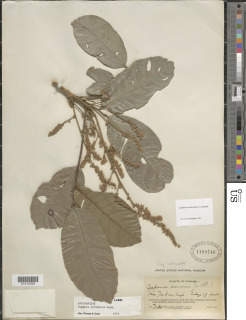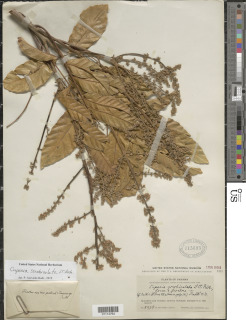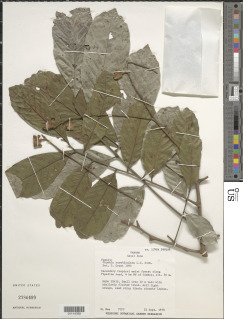

|
|
|
|
Family: Sapindaceae
Gorgojero, more...gorgojo
|
Description: A small treelet of the forest understory, occasionally reaching 10 cm trunk diameter but usually much smaller. When small, the trunk and branches are grooved or fluted, but larger trunks lose the fluting. Leaves are alternate, compound, with 10 or so leaflets that usually alternate with one another. The terminal leaflet is angled to one side, and at its base there is a small woody protuberance angling in the other direction. Leaflets have large, broad, rounded teeth, are pointed at the tip, but are otherwise quite variable in shape, some much narrower than others. The petiole has a swollen base, brown and flattened. Reproduction: Flowers are small and white. The fruit is a round capsule with three sections, green then maturing red around September and October. The capsule opens, revealing one seed per section, each seed with an aril that attracts animal dispersers. Distribution: Widespread from wet forests of the upper Chagres to the dry Pacific forests near Panama City, but far more common on the Pacific slope. On some hills near Panama City, it is the dominant treelet of the forest understory. Not seen outside the forest. Similar Species: The genus Cupania is easy to recognize, with an angled terminal leaflet, the woody protuberance next to the terminal leaflet, and mostly alternate leaflets. C. scrobiculata is most like LK cupaci C. cinerea LK2 and LK cupala C. latifolia, LK2 both of which also have broad, rounded teeth. But both species have a rounded leaf tip, not pointed, and cinerea is conspicously white on the leaf underside. LK matasc Matayba scrobiculata LK2 of the same family resembles Cupania and also has large teeth on the leaflets, but has fewer leaflets, usually 4. |





